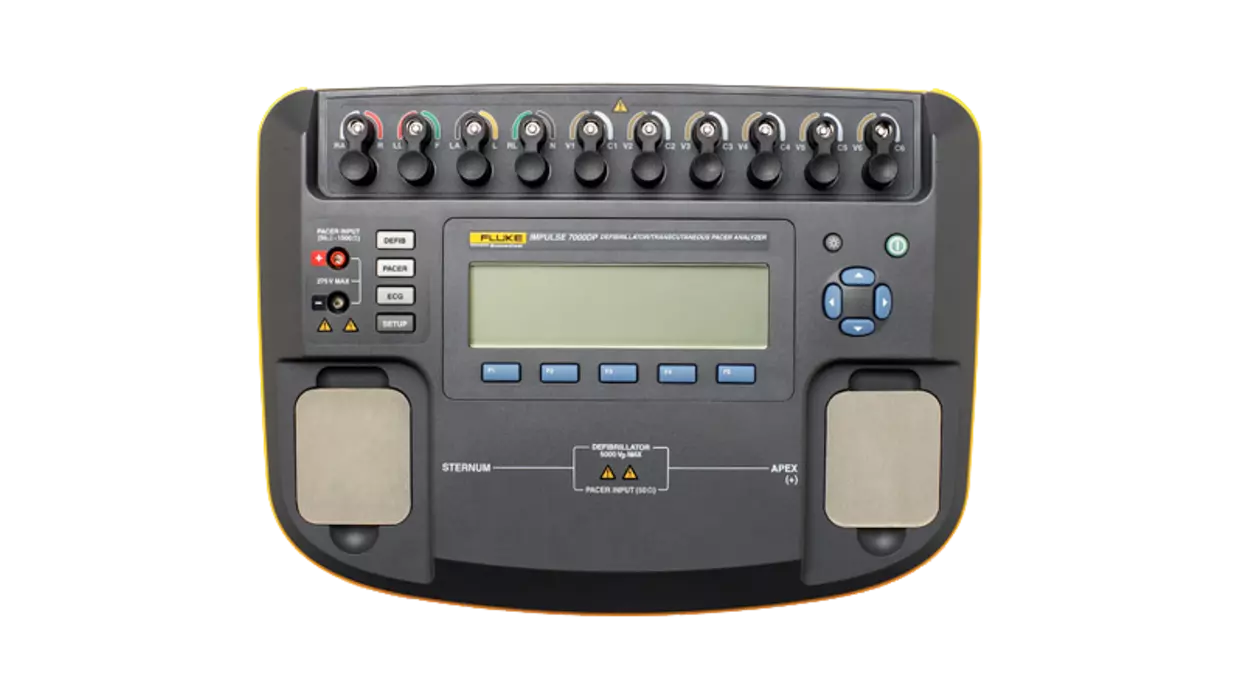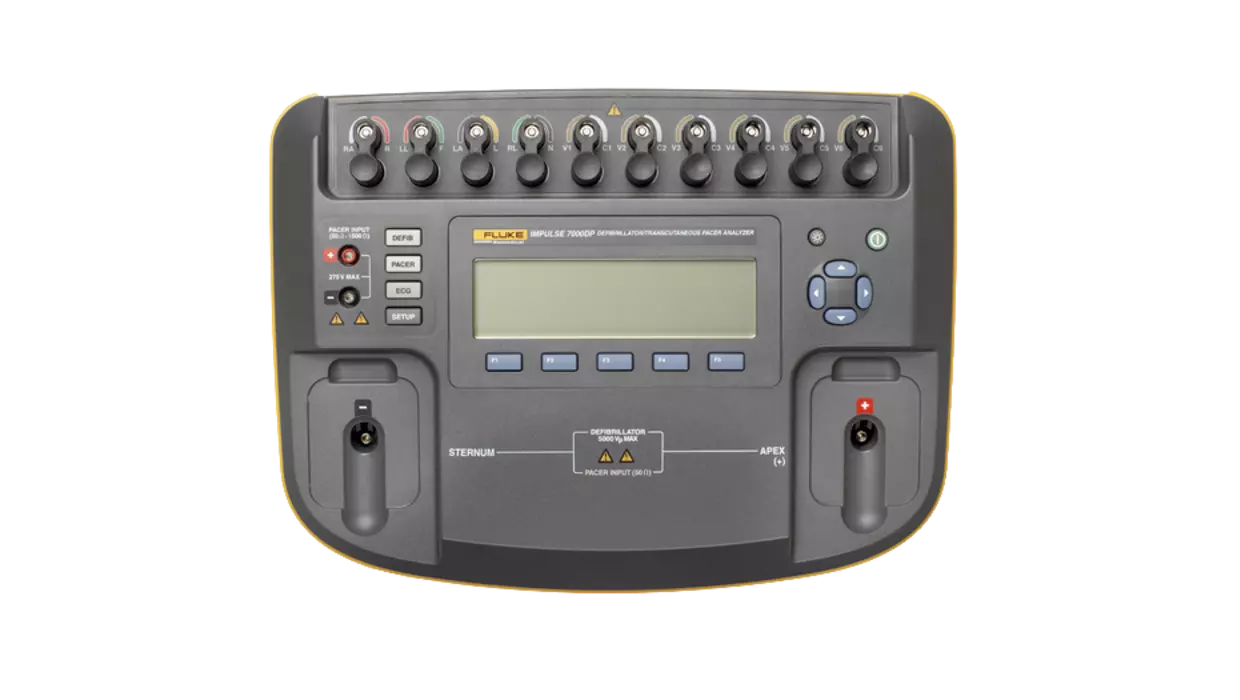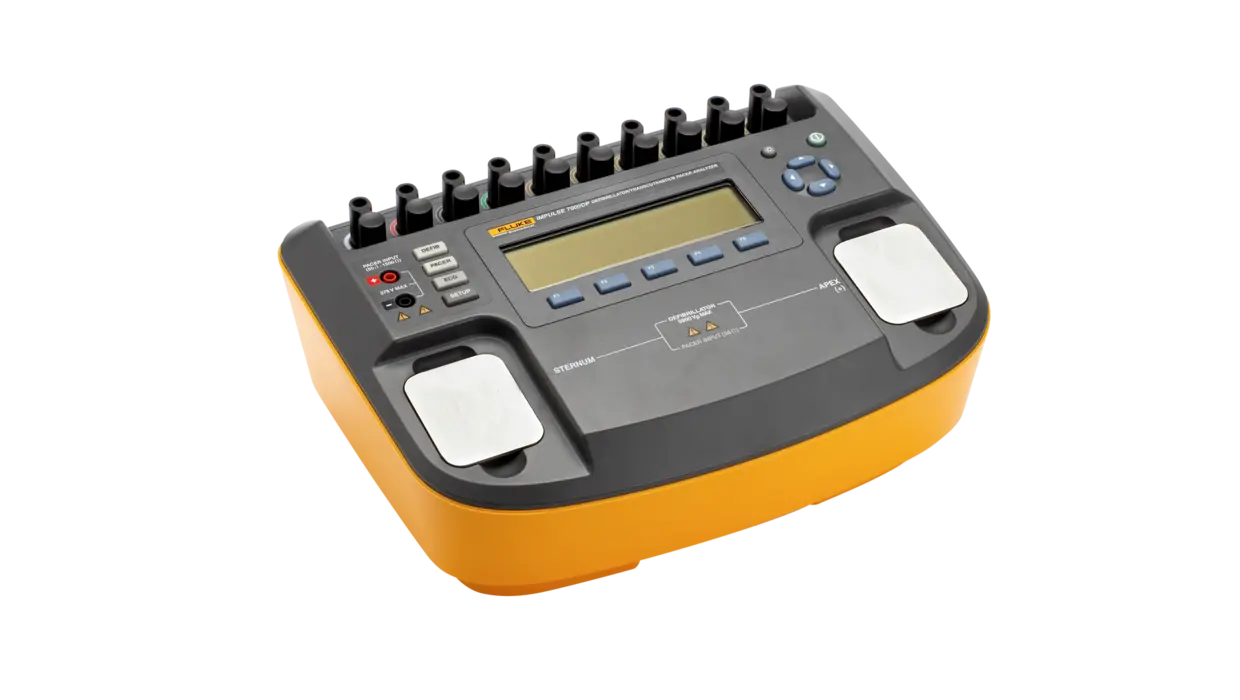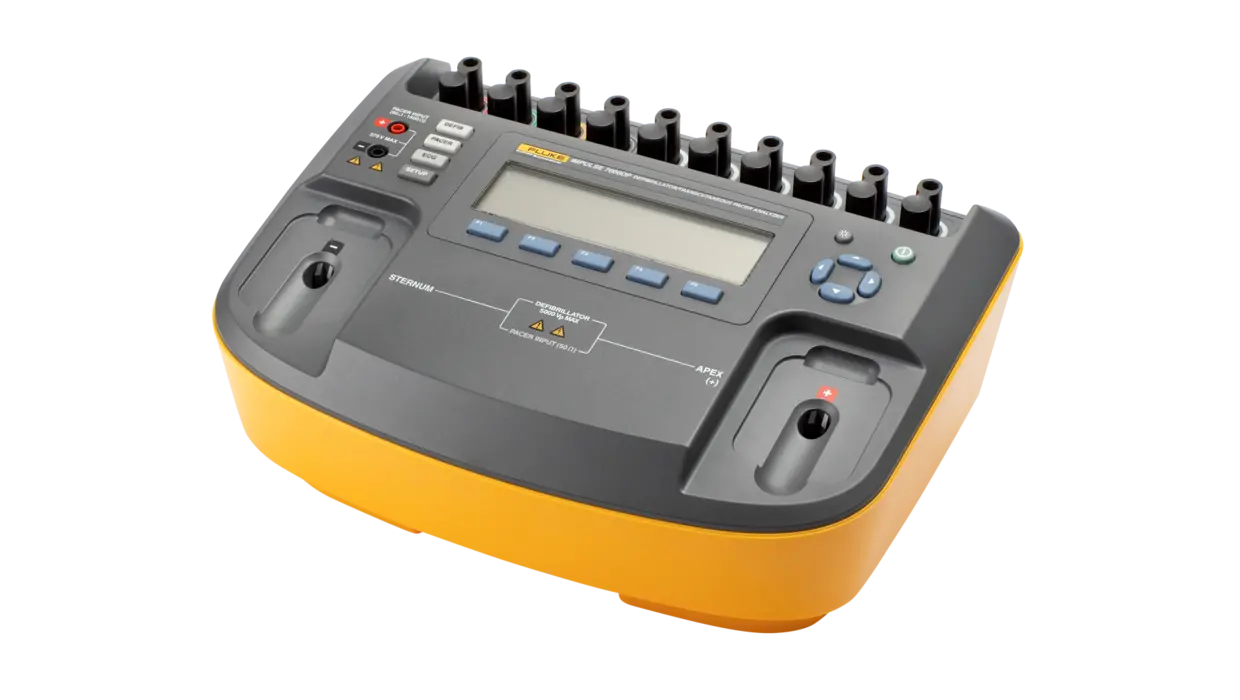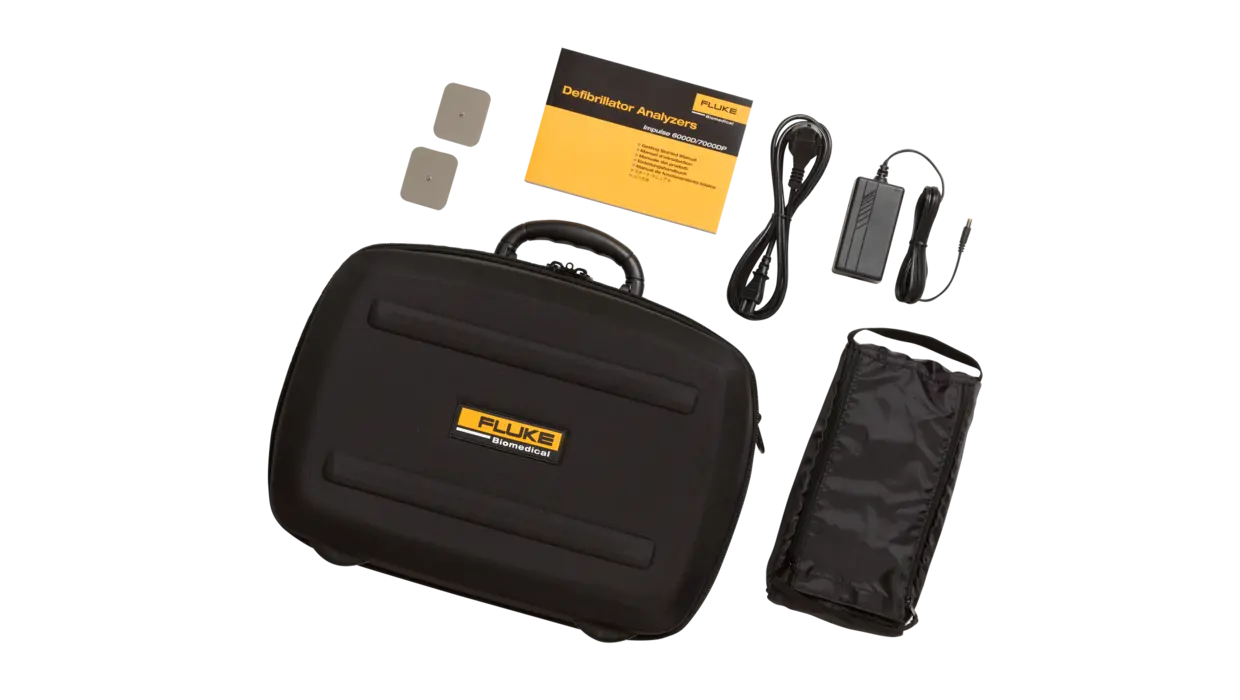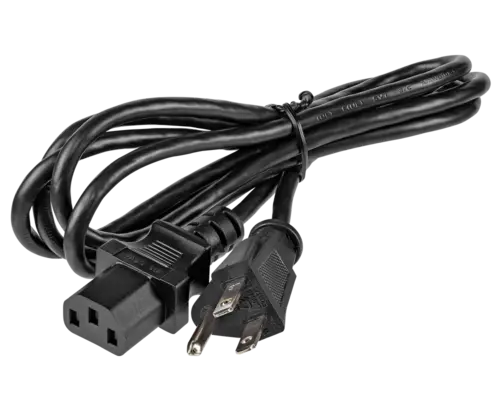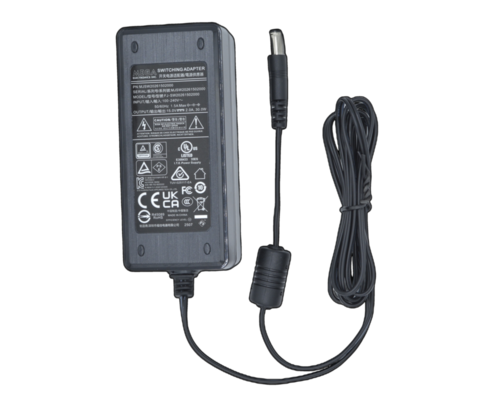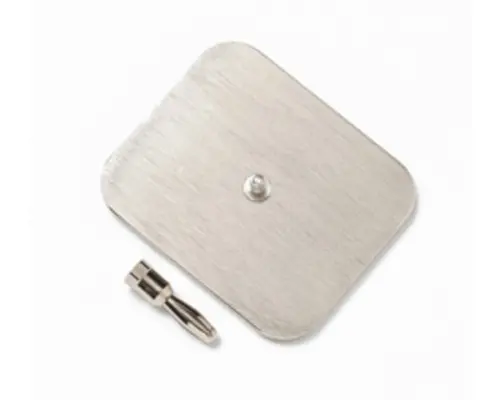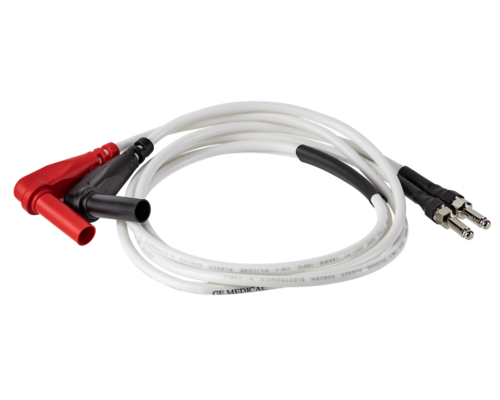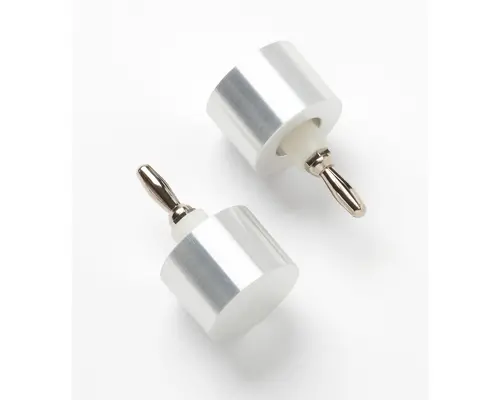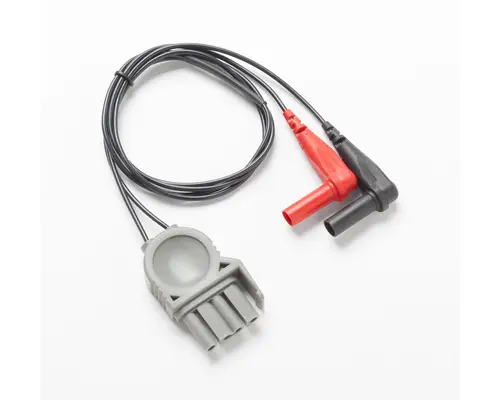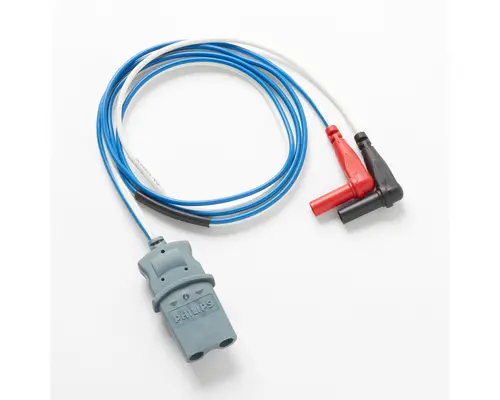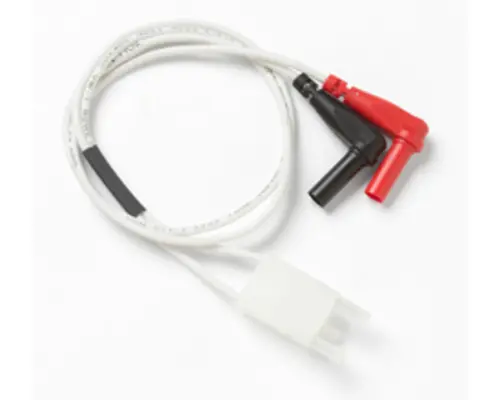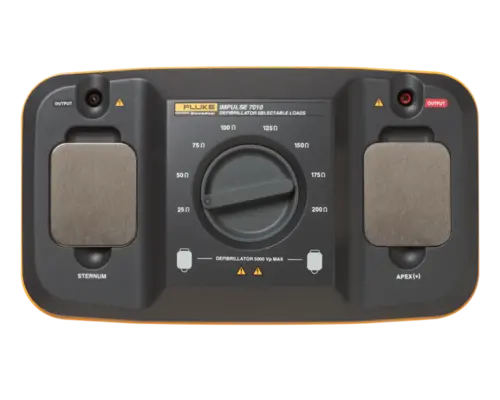Impulse 7000DP
Defibrillator Analyzer and AED Tester
Efficient, Accurate, Versatile
Key Features
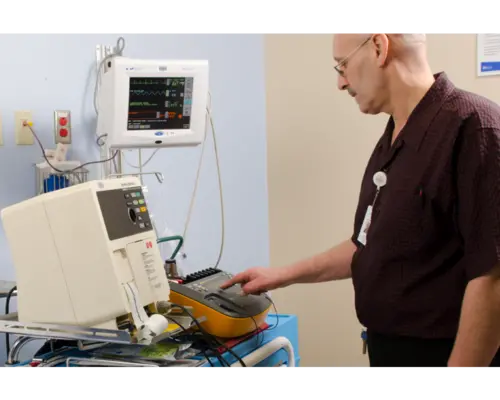
Defibrillator and Pacemaker Analyzer
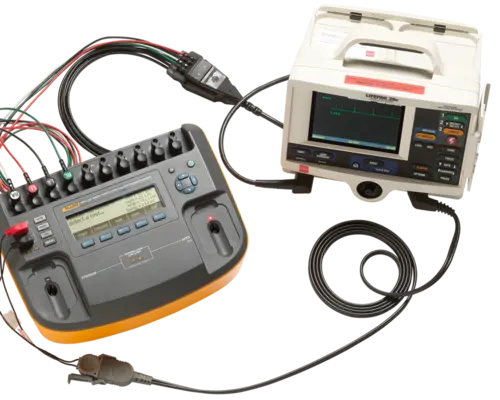
AED compatibility and 12-lead ECG simulation
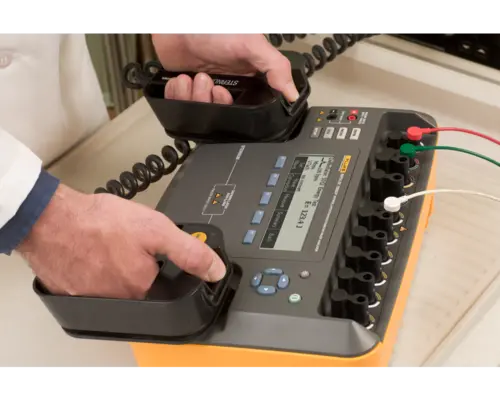
Energy output measurement and ECG waves
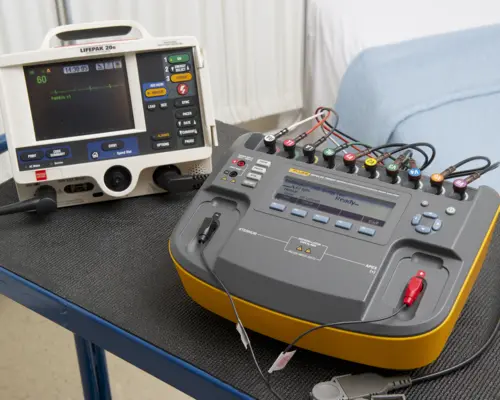
First-in-class accuracy ± 1% of reading + 0.1J
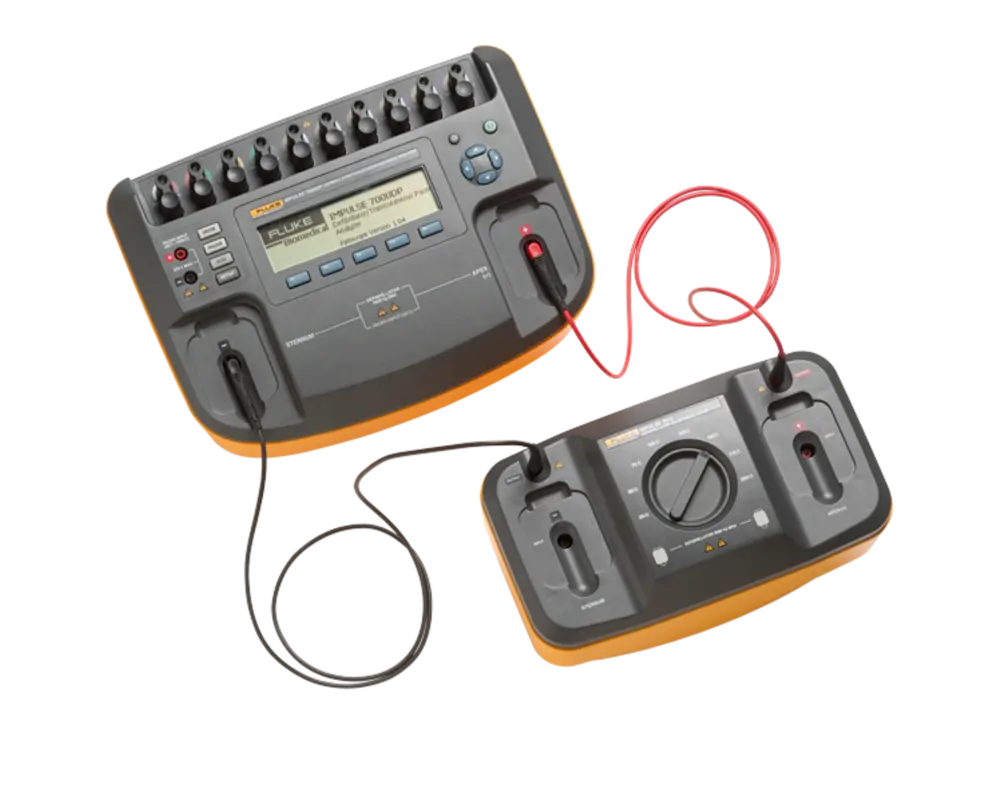
Top-Tier Defibrillator/Pacemaker Analyzer
The Impulse 7000DP Defibrillator/Transcutaneous Pacemaker Analyzer is designed to help ensure the proper operation and ultimate performance of critical life-support cardiac-resuscitation equipment. The device is renowned for its superior compliance, technology, efficiency, and user-friendliness. Its rugged exterior houses first-class technology, setting this defibrillator tester apart. The Impulse 7010 Selectable Load Box is a unique, robust and easy-to-use tool which provides the capability to test defibrillators under a variety of patient impedance conditions to ensure patient safety and is the perfect companion to the Impulse 7000DP.
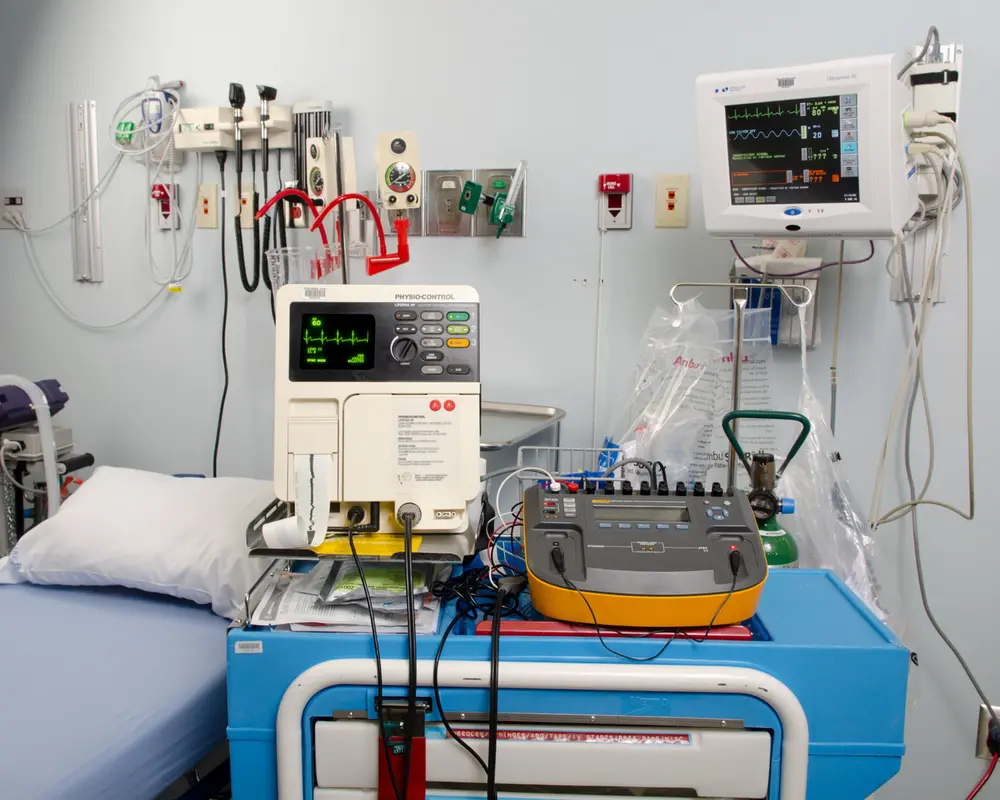
Compliance and Broad Compatibility
The Impulse 7000DP complies with IEC 60601-2-4 and AAMI DF80 standards. It's compatible with a variety of defibrillation technologies, including Lown, Edmark, trapezoidal, biphasic, and pulsed-biphasic, and AEDs. It also offers 12-lead ECG simulation and flexible heart-rate settings.
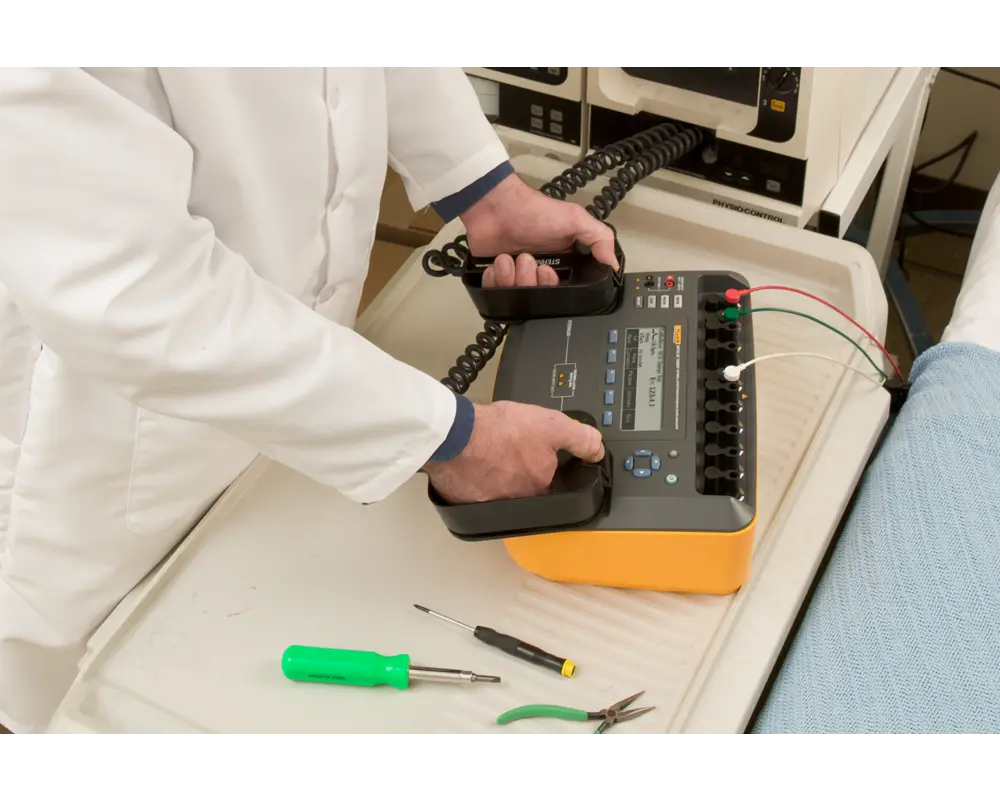
Advanced Functionalities for Comprehensive Testing
The Impulse 7000DP model is a combination Defibrillator Analyzer and Pacemaker Tester. It includes energy output measurement, ECG waves, and an extensive range of test loads and measurement algorithms needed to test external transcutaneous pacemakers.
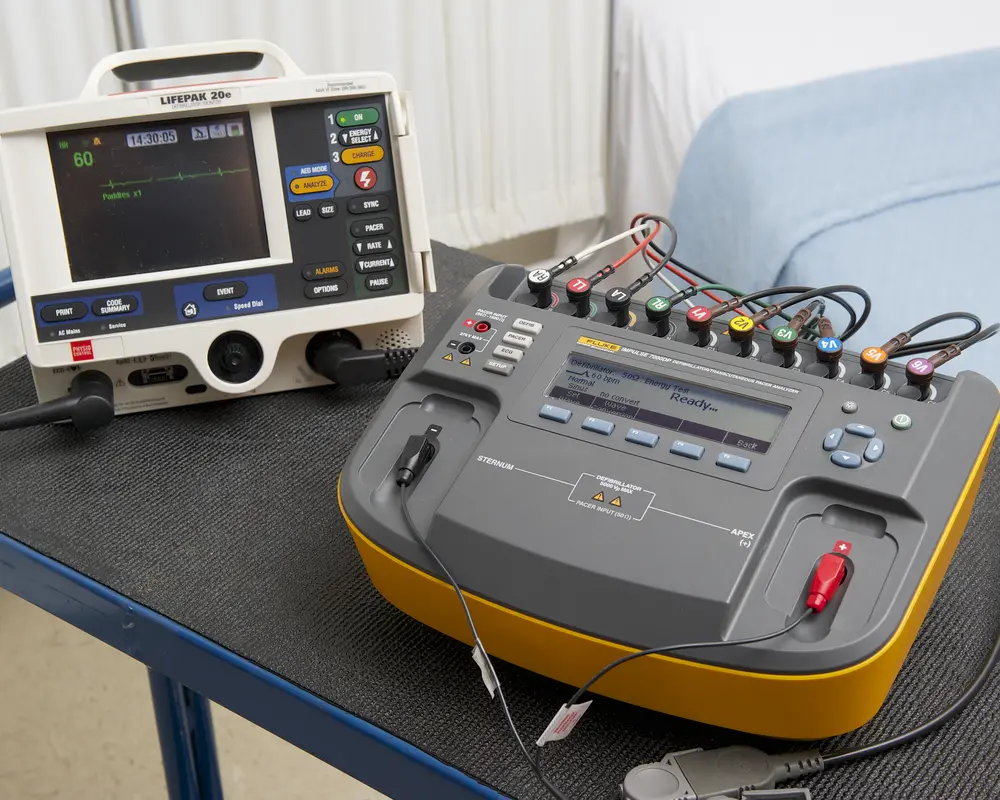
Superior Accuracy and Battery Life
The Impulse 7000DP offers superior performance with first-in-class accuracy of ± 1% of reading +0.1J and a long-lasting, rechargeable battery. It features 10 independent ECG outputs for 12 lead combinations.
Meet the Impulse 7000DP Defibrillator Analyzer and AED Tester

OneQA Workflow Automation Software
When connected to a PC, running tests is fast and easy with OneQA software. Testing and documenting results is fully automated, saving you valuable time while enhancing accuracy.
Documentation
Manuals
Imp7000 IntraTest Results
Impulse 6000D/7000DP Datasheet
Available in English, Chinese, French, German, Italian, Japanese, Portuguese, Spanish, Turkish
Impulse 6000D/7000DP Getting Started Guide
Available in English, Chinese, French, German, Italian, Japanese, Spanish
Impulse 6000D/7000DP Getting Started Supplement
6000D/7000DP Manual Supplement
Impulse 6000D/7000DP User's Manual
Impulse 7000DP Upgrade Instruction Sheet
Datasheet
Impulse 6000D/7000DP Datasheet
Available in English, Chinese, French, German, Italian, Japanese, Portuguese, Spanish, Turkish
Certifications
Imp7000 ESA Certificate of Compliance
Impulse 7000DP CE Declaration of Conformity
Impulse 7000DP CSA Certificate of Conformity
Impulse 7000DP EMC Certificate of Conformity
Software
Communication Interfaces
Defibrillator Analyzers
Impulse 6000D/7000DP Communications Interface v2.4
Firmware Update
Defibrillator Analyzers
Impulse 7000 Firmware v2.12
Impulse 6000D/7000DP Firmware
RequirementsAnsur Executive 3.1.3 (or later) and Ansur Impulse 7000 Plug-In 1.2.5 (or later) Windows
Application
Software
Ansur 3.1.4 Executive Software
.NET Framework 3.5 Prerequisite
In order to run Ansur software and its plug-ins for compatibility up to Windows® 10, .NET Framework version 3.5 SP1 must be installed on the PC.
Plugin
Defibrillator Analyzers
Ansur Impulse 6000D/7000DP Plug-In v1.2.5
Requires Ansur Executive 3.1.3 or higher.
Allows selection of VFIB2 Coarse and VFIB2 Fine ECG waveforms for Energy measurement, Charge Time, and Arrhythmia Wave tests. Updated VFIB waveforms to VFIB1, but kept backwards compatibility for existing Ansur templates and test records. Corrected some formatting issues in test reportsAnsur Plug-In module to control the Impulse 6000D Defibrillator Analyzer and Impulse 7000DP Defibrillator / Pacemaker Analyzer.
Models
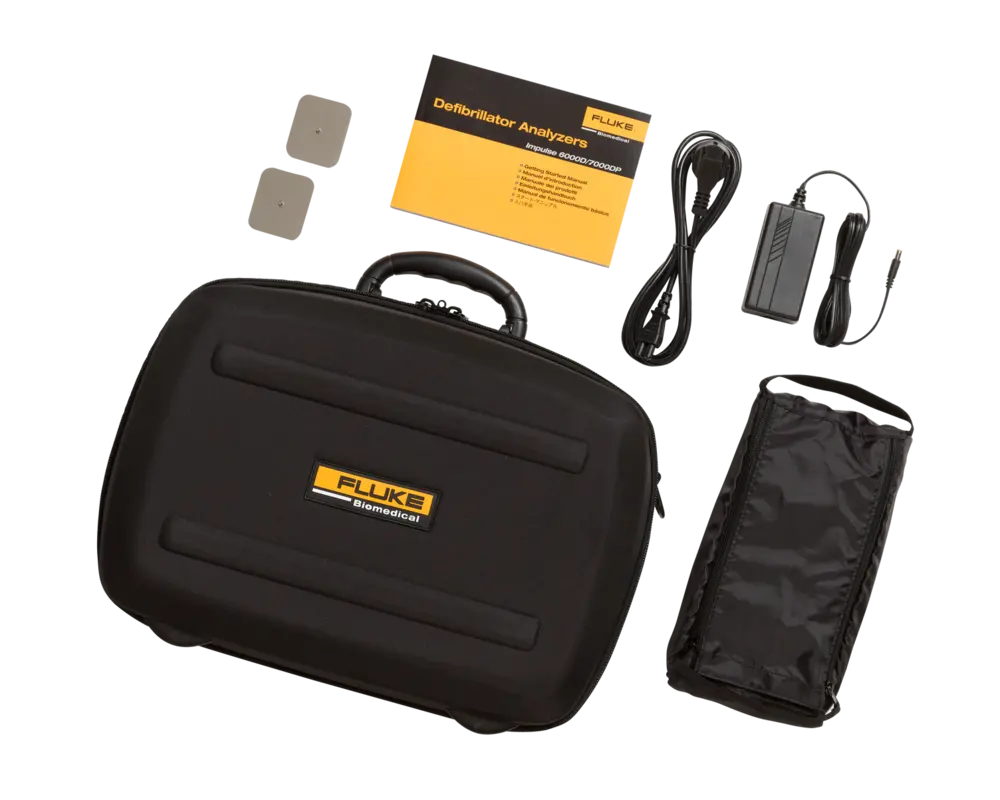
What comes in the box:
- USB Computer Communication Cable (Cable assembly)
- Getting Started Guide (Manual)
- Battery Eliminator (country-specific)
- Defib Paddle Contact Plates (FBC-IMP7000-8010)
- Carrying Case (Soft case)
Frequently asked questions
The answer to this question is somewhat counterintuitive. Battery pack gas-gauge ICs, such as the one used in the Impulse 6000D/7000DP, use a complex algorithm to estimate battery-charge state, taking into account time, temperature, and current flow. The self-discharge estimation (i.e., how much charge the battery loses over time during periods of non-use, sometimes called "shelf-life") is particularly sensitive to battery chemistry, and the shelf-life of today's NiMH cells is significantly longer than the algorithm built into the gas-gauge ICs can accommodate.
When an Impulse 6000D/7000DP is left idle for a few weeks and then powered-on, the battery charge level might be reported as 55 % when the true charge level might be 80 %. If the battery is then completely charged, which requires a 20 % increase in battery charge level, the charge level is only reported as 75 % (55 % plus 20 %).
To correct the reported charge level, use the "Train Battery" feature. To access this feature, press the [SETUP] key, then the [F1] softkey(labeled "Battery"), then press the [F3] softkey (labeled "Train Battery"), then follow the instructions presented on the screen. This procedure can take overnight to complete.
To keep the reported battery charge level as accurate as possible during extended periods of non-use, the Impulse 6000D/7000DP should be left connected to mains power via the battery charger with the unit powered off in an ambient temperature of 15° C to 26° C (60° F to 78° F). This will continuously trickle-charge the battery (the charge-status LED on the rear panel will be green) to keep both the actual and estimated battery charge level at 100 %.

